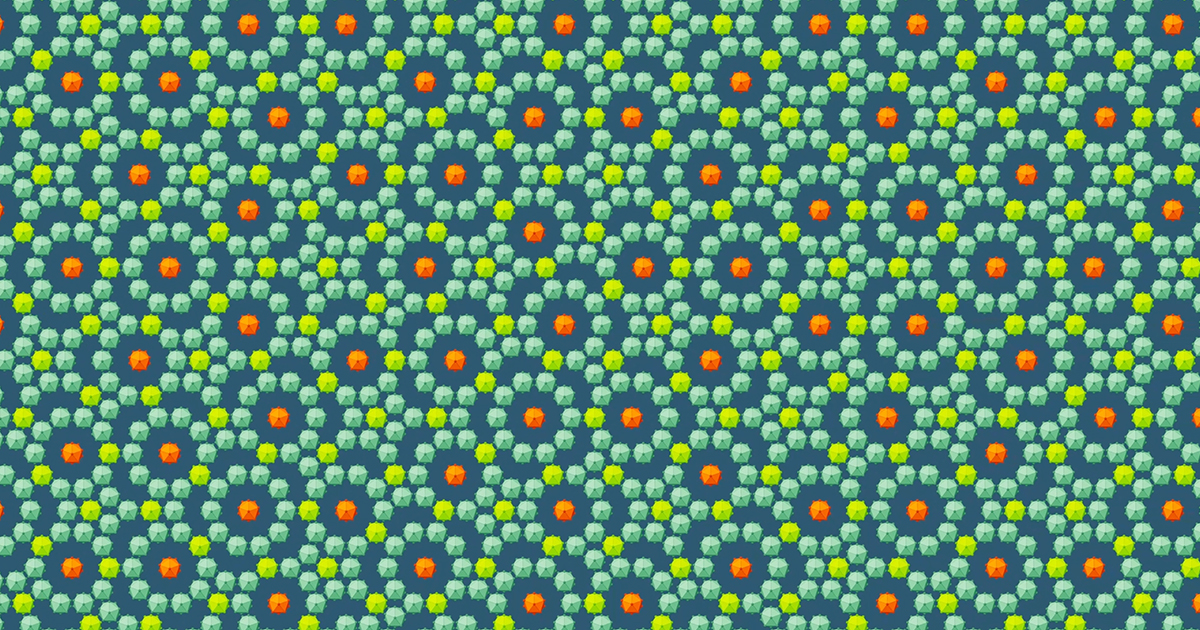“That’s just freaking awesome. It’s a really clever thing,” Glotzer said. “Until now, no one has ever successfully tried to do DFT calculations on something that wasn’t periodic.”
Michael Widom, a physicist at Carnegie Mellon University, said the stability result might help explain how quasicrystals form in the first place. “It answers a fundamental question. If you’re confronted with the existence of something, you would like to know, ‘Why does it exist?’” he said. “It satisfies intellectual curiosity.”
Materials naturally tend toward lower-energy states. The overall energy depends on how closely atoms are packed together, as well as the shapes of their bonds. In the quasicrystals that the Michigan team studied, the rhombic triacontahedrons forced quasiperiodic patterns and appeared to require relatively little energy.
“We haven’t proven this conclusively, but my interpretation is that the triacontahedrons, these building blocks of quasicrystals, are a very happy shape,” Sun said. “By happy, I mean a low-energy, stable-shaped building block.”
Dynabead Quasicrystals
A recently published experiment led by Brennan Sprinkle, an applied mathematician at the Colorado School of Mines, was designed to guide particles to that happy place.
Atoms are so tiny that physicists can’t easily observe or control their assembly into quasicrystals. So Sprinkle and his collaborators developed a new, comparatively simple fabrication method: They grew quasicrystals out of commercially sold particles called Dynabeads. At micrometers across — 10,000 times larger than individual atoms — Dynabeads are vastly more easily controlled and observed. Using magnetic and electrical fields, the researchers induced quasiperiodic structures to “just fold out from some nucleation point like a three-dimensional snowflake,” Sprinkle said.
